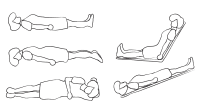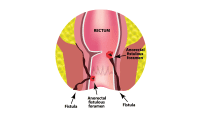The healthcare industry is at a critical juncture. The quest to find solutions that deliver better care for less money is imperative. To address this challenge, there is much talk these days about “sustainability” practices, which means managing resources in a way that is good for care today, and even better for care tomorrow. One way to safety generate cost savings with almost no up-front investment and minimal disruption to operations is through a third-party reprocessing program.
Third-party reprocessors are regulated by the U.S. Food and Drug Administration (FDA) and held to the same standards as original equipment manufacturers of single-use medical devices (SUD). A reprocessed SUD is an original device that has previously been used on a patient and has been subjected to additional processing and manufacturing for the purpose of an additional single-use on a patient. Reprocessed SUDs are cleaned, remanufactured, sterilized, and repackaged for re-use.
With FDA oversight of reprocessing standards, acceptance of high-quality reprocessed medical devices has increased significantly. Currently, the FDA has granted clearance for the reprocessing of more than 100 different items previously designated as SUDs, including:
- Trocars, ultrasonic scalpels, laparoscopic instruments, orthopedic and arthroscopic instruments
- Diagnostic ultrasound catheters, EP catheters and cables, tissue stabilization and heart positioning devices
- Venous thromboembolism prevention compression sleeves and disposable pulse oximeter sensors
In addition, a study by researchers at Johns Hopkins University School of Medicine found reprocessed SUDs to have a reliable safety record of excellence similar to that of new equipment, while being more cost effective and environmentally friendly.
Benefits
Reprocessing programs are currently employed by more than half of U.S. hospitals. The level of savings from using reprocessed devices varies by device type and program participation; however, hospitals typically pay about half the cost for a reprocessed medical device versus the original equipment manufactured device labeled as “single-use.” Hospitals can also save money that would be spent on special handling and waste management of that device. These cost savings can be used as investments in technology, educational programs, quality equipment, and hiring and retaining critical staff members.
A well-integrated reprocessing program not only saves money, but also significantly decreases the impact on the environment. Healthcare facilities are the second leading contributor of waste in the United States, producing more than 4 billion pounds of waste annually. Using reprocessed devices can help mitigate these numbers. In fact, members of the Association of Medical Device Reprocessors help divert an estimated 9 million pounds of medical waste from landfills over the course of a year, which ultimately provides a cleaner environment in which to live.
Maximizing effectiveness
To ensure your third-party reprocessing program provides the most benefits, follow these suggestions.
Do research. Learn to separate fact from misinformation or personal impressions when it comes to reprocessing by educating your staff. Though third-party medical device reprocessing is subject to strict FDA regulatory guidelines, it is not uncommon to encounter the belief that reprocessing refers to in-house cleaning and sterilization of reusable instrumentation. Get the facts to help set the record straight – the savings potential is too great to be offset by inaccuracies. It is estimated that the healthcare industry would save nearly $2 billion every year if just 1% or 2% of devices marked “single-use” by device manufacturers were able to be reprocessed through an FDA-regulated third-party reprocessor.
Select the right reprocessing partner. It’s critical to choose a reprocessing partner that will work closely with your staff to answer questions and ensure the regular, ongoing exchange of information. Your reprocessing rep is a resource for questions, program improvement opportunities, and updates in the industry. When properly implemented, reprocessing programs seamlessly integrate into your facility’s supply management system.
Get passionate. Saving money, diverting waste, and protecting staff feels good. Once you’ve taken the time to understand how reprocessing works, you can more effectively advocate for it, and you’ll continue to be inspired as you see the effects of your growing savings and waste diversion numbers. The most successful reprocessing programs are sustained by people who have independently reached the conclusion that reprocessing is an essential part of how a facility should operate in the future of smart healthcare resource management. They know operating rooms are some of the most resource-intensive and waste-producing places in hospitals, generating between 20% and 30% of a facility’s waste. Much of that waste is disposed of as regulated medical waste, which costs 10 to 15 times more to dispose of than regular waste.
Support the program. Productive, informational sessions help answer questions and eliminate confusion surrounding third-party medical device reprocessing and how it works. It is vital for managers to attend, as this will send a signal to staff that reprocessing as a sustainability solution is a priority for your hospital, and an important commitment for staff to take seriously. Demonstrating your support goes a long way toward fostering the type of program engagement that is needed to produce optimal results.
Hold staff accountable. Hold staff accountable for reaching a facility’s cost avoidance and waste reduction goals. Paint a clear picture of how reprocessing can impact a hospital’s financial performance. The best way to do this is through set tracking and reporting systems. Keep reprocessing top of mind with staff by tracking the program’s progress and providing regular updates on the program’s impact. Setting measureable goals and tracking progress will aid in the program’s overall growth and success. When staff reaches a savings goal or waste diversion milestone, celebrate it in your hospital’s newsletter or on the website. You may even consider generating a press release to share with local media. Reaching a sustainability milestone is an excellent time to rally support for your hospital’s hard work and commitment to a sustainable future.
Beware of program drift. In addition to establishing open lines of communication at the beginning, it’s important to perform regular, routine maintenance on your program. Think of it as servicing your car before the check engine light appears. The minute you have a question such as, “What do I do with this pulse oximeter?” or “Are we still reprocessing these sleeves?” you should contact your reprocessing representative for up-to-date answers and tips for best practices. Uncertainty or confusion about the collections process can lead to missed opportunities for savings.
Improve, optimize, repeat. Healthy, active dialogue with your reprocessing partner will lead to performance tweaks that will help you steadily grow your program to realize the greatest possible savings. If reprocessing is being implemented in just one area of the hospital, consider expanding to other areas such as the operating room and interventional cardiology department, as well as patient care areas. Constantly enhancing and expanding a reprocessing program is an essential step toward achieving true healthcare sustainability.
Attend education programs. Continuing education programs are an important way to stay up-to-speed on industry trends. Look into accredited continuing education programs about sustainability practices that are tailored specifically for all hospital-based registered nurses, technicians, and administrators.
Get involved
Implementing a reprocessing program is one of the best ways for hospitals to manage resources and become more financially and environmentally sustainable. Get educated, get involved, and you’ll be amazed at the difference you can make, both in your facility and the industry as a whole.
Caryn Humphrey is a product manager at Stryker Sustainability Solutions.
Selected references
Association of Medical Device Reprocessors. Third-Party Medical Device Reprocessing. www.amdr.org. Accessed February 24, 2013.
Desmon S. Going green in the hospital will save money, reduce waste. Johns Hopkins Gazette; 2010 http://gazette.jhu.edu/2010/03/01/going-green-in-the-hospital-will-save-money-reduce-waste/. Accessed February 24, 2013.
Healthier Hospitals Initiative. http://healthierhospitals.org/. Accessed February 25, 2013.
Practice Greenhealth. Greening the Operating Room Initiative. http://practicegreenhealth.org/initiatives/greening-operating-room. Accessed February 24, 2013.
U.S. Food & Drug Administration. Medical Devices. Reprocessing of Single-Use Devices.http://www.fda.gov/MedicalDevices/DeviceRegulationandGuidance/ReprocessingofSingle-UseDevices/default.htm. Accessed February 24, 2013.
U.S. Government Accountability Office. Reprocessed Single-Use Medical Devices. FDA Oversight Has Increased, and Available Information Does Not Indicate that Use Presents and Elevated Health Risk. http://www.gao.gov/products/GAO-08-147. Accessed February 24, 2013.

















